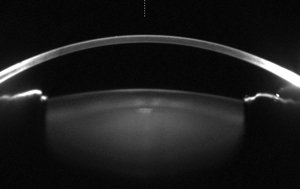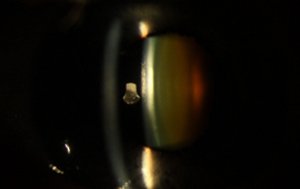Refractive lens exchange [RLE]
What is Refractive Lens Exchange [RLE]?
Refractive Lens Exchange (RLE), also known as lens replacement surgery or clear lens extraction, replaces the eye’s aging lens with an artificial lens implant. Similar to glasses, the implant has the proper prescription to provide clear vision, and modern lens technology can correct both near and distance vision. RLE is becoming a popular LASIK alternative for patients over 40 with presbyopia.
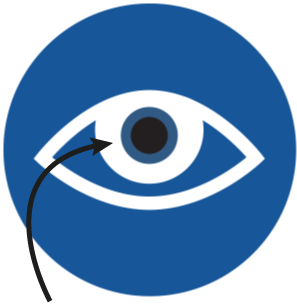
Who is a good candidate for RLE?
RLE may be a better choice than refractive surgery (LASIK or PRK) for patients with:
High refractive errors, including nearsightedness and farsightedness
Thin corneas that make them poor LASIK candidates
Chronic dry eyes
Contact lens intolerance
Progressive presbyopia (difficulty seeing up close)
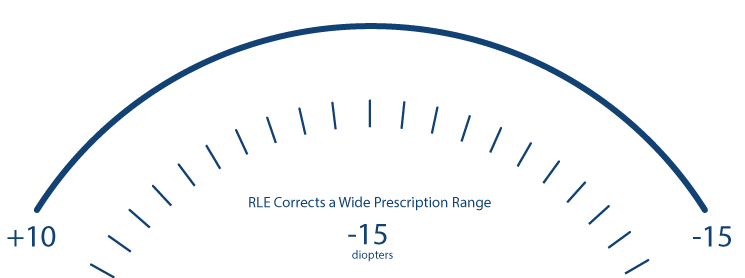
What is presbyopia?
As we age, our eyes age too. By the early 40s, many people notice the need to hold reading material farther away or struggle to see the computer up close. This condition, called presbyopia (pronounced pres-BEE-opia), is not a disease but a natural stiffening of the eye’s lens. As the lens loses flexibility, it becomes harder for the eye to shift focus between distant and near objects.
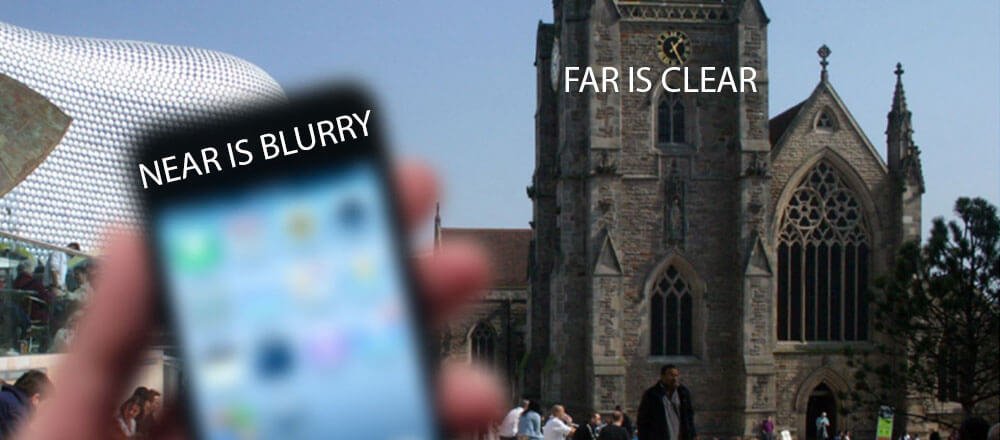
What are some treatments for presbyopia?
As small print becomes harder to see, most people become dependent on reading glasses. Even those who have never been nearsighted or farsighted will eventually develop presbyopia and need readers. For some LASIK candidates, monovision correction can be an option, with one eye set for distance and the other for near vision. However, this approach doesn’t prevent the need for future cataract surgery and may not be ideal for patients with dry eyes.
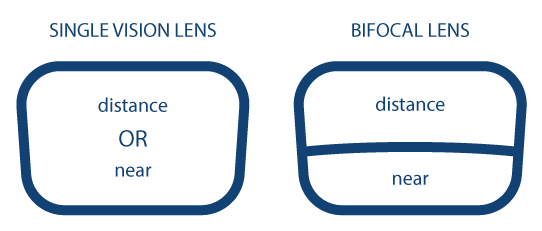
How can RLE fix Presbyopia?
The good news is that advances in technology now make it possible to correct these “over 40” vision problems with RLE. Unlike standard single-vision lenses, modern intraocular lenses are designed to provide clear vision across a range of distances. They deliver excellent distance vision while also improving intermediate vision—roughly the equivalent of wearing +1.5 D reading glasses—helping reduce dependence on eyeglasses.

1. Tiny circular grooves extend the range of vision
2. Haptics, or side struts, hold the lens in place

“Minimizes the use of eyeglasses.”
How Safe is RLE? What are the risks?
The risks of RLE are similar to those of cataract surgery. In the United States, about 4 million cataract surgeries are performed each year, making it a well-established, safe, and highly effective procedure with a success rate of approximately 98%.
What are the visual outcomes of RLE?
A recent study of RLE with the Symfony IOL found 97% of patients achieved binocular uncorrected distance VA ≥ 20/25 and 85% achieved uncorrected near VA ≥ 20/40.
RLE Visual Outcomes Following Implantation of the Symfony IOL [n=2018 eyes]
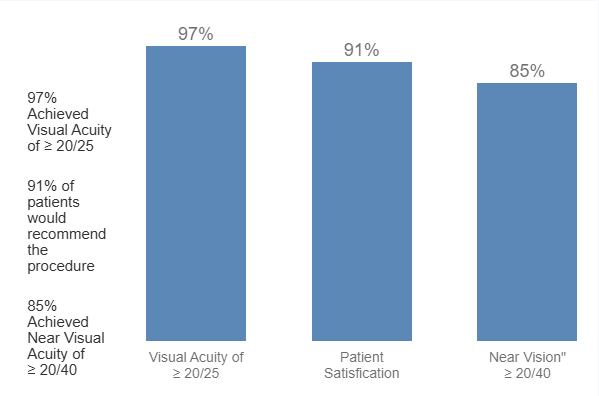
“97% Achieved Visual Acuity of ≥ 20/25!”
What is Dysfunctional Lens Syndrome [DLS]? What is Dysfunctional Lens Replacement?
DLS, or Dysfunctional Lens Syndrome, is a term used to describe age-related vision changes that reduce clarity at both near and far distances. It encompasses a spectrum of age-related changes, including presbyopia and declining image quality. Often referred to as an “early cataract” or “pre-cataract” stage, these terms can suggest waiting years for the cataract to progress before surgery. In contrast, Dysfunctional Lens Replacement refers to addressing near vision problems earlier by replacing the aging lens with a new intraocular lens.
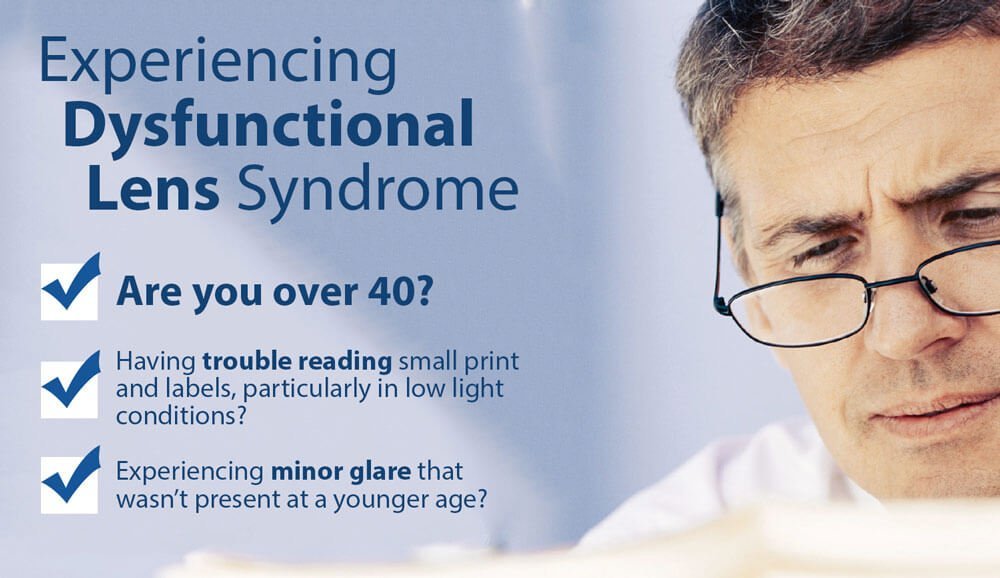
How is Dysfunctional Lens Syndrome Diagnosed?
Our Eye Exam allows us to look beneath the eye’s surface and evaluate changes in the natural lens as it progresses through the stages of Dysfunctional Lens Syndrome (DLS):
Stage 1 – Presbyopia:
The lens remains clear but loses flexibility. Reading glasses or bifocals become necessary.
Stage 2:
The lens stiffens further and begins to cloud, causing glare, halos, and reduced visual quality. Patients may notice more difficulty with night driving and reading in dim light.
Stage 3 – Cataract:
The lens has become a cataract, with significant light scatter leading to poor vision in low light, impaired night driving, and a marked decline in both reading and distance vision.
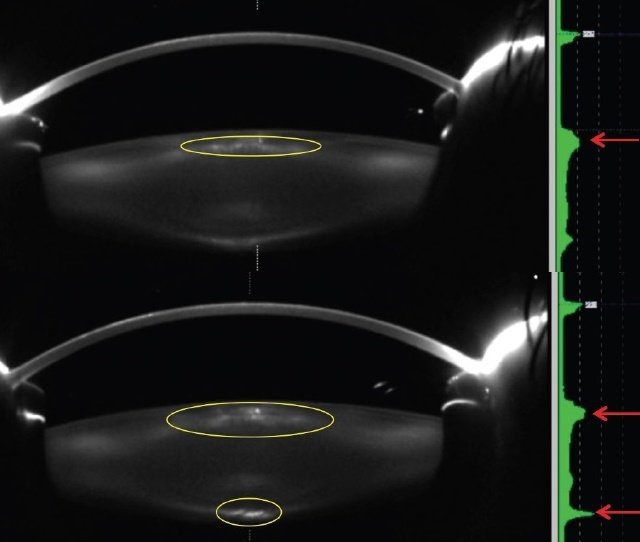
Stage 1
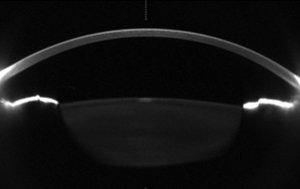
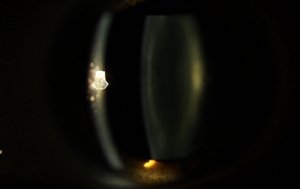
Stage 2
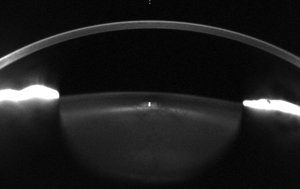
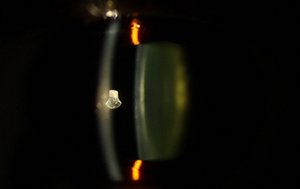
Stage 3
